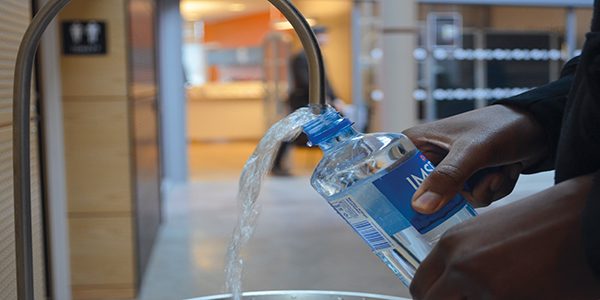Researchers at the Department of Sociology, and the Divisions of Water Resources Engineering and Applied Microbiology at LTH come together to discuss how our idea of ‘cleanliness’ has changed over time, our present aversion to bacteria, as well as the environmental and health implications of our modern definition.
Our way of thinking about cleanliness has changed, says Tullia Jack, doctoral student at the Department of Sociology. Her research primarily focuses on why cleanliness expectations are increasing despite our awareness of the associated water and energy consumption.
Catherine Paul, senior lecturer in the Divisions of Water Resources Engineering and Applied Microbiology notes that tap water in Lund contains around 200,000 bacteria cells per milliliter. Daunting as this seems, her research shows that most drinking water in Sweden contains a lot of bacteria, though what they are doing is not really clear.

Though their backgrounds vary, their research finds common ground when discussing cleanliness. According to both Tullia Jack and Catherine Paul, the way we are living today is high above the necessary sanitary threshold, which can have negative health and environmental implications. Both note that we still need a basic standard of cleanliness to avoid disease.
“Perhaps we need to give our immune systems a workout,” suggests Tullia Jack. Being high above the threshold does not mean healthier. As more people already above the necessary threshold gain greater access to cleaning utilities, electricity and water consumption also increase.
In the field, Tullia Jack spoke with a social worker who worked with people living on the streets in Malmö. One of the first things a client of hers bought, once she had the money, was soap. “There may be a class aspect to how pressured you feel to buy cleaning products, and to be clean. Those in danger of being seen as lower class may feel extra pressure to avoid this stigma.”
How then, do we change our perspective on cleanliness? Catherine Paul says “If people begin to understand that many bacteria are not always a bad thing, then using large amounts of resources to significantly decrease bacteria in water may begin to seem unnecessary.” Still, removing all the disease-causing bacteria is important.
Catherine Paul notes an important difference between sterile and clean. “Clean does not necessarily mean free of bacteria, or sterile. It should mean free of things that can cause disease. You need sterile conditions when it is important for fighting infections, like during surgery,” she says.
A difficulty in Catherine Paul’s research is conveying that some bacteria can remain, while others must be removed. She suggests instead of killing off most bacteria, we need to learn how to culture and nurture the beneficial populations of bacteria on our skin, in our guts and in our drinking water to avoid pathogenic bacteria, be healthy, and save resources.
The next step in Catherine Paul’s research will be to answer what all of the bacteria in our water are actually doing. They likely serve a purpose, we just don’t know what it is yet. Tullia Jack continues to research why our standard of cleanliness is on the rise from a sociological standpoint.
Future collaboration seems likely. Both Tullia Jack and Catherine Paul agree such multidisciplinary collaborations are important. Similar connections can already be seen at the Lund University Water Portal, a research network focusing on challenges within the water field.









